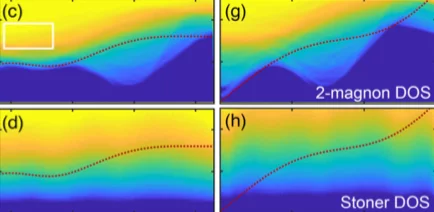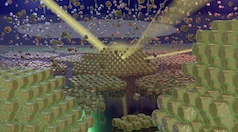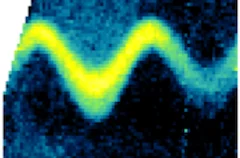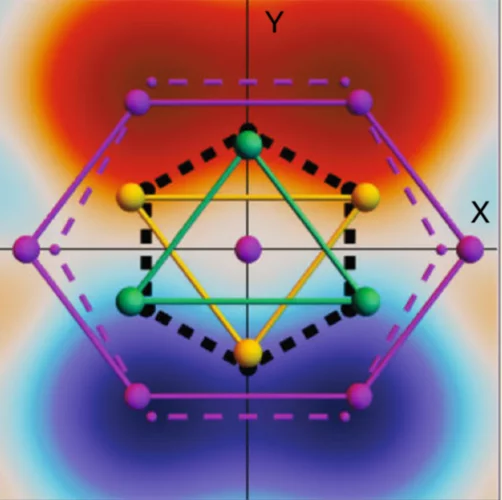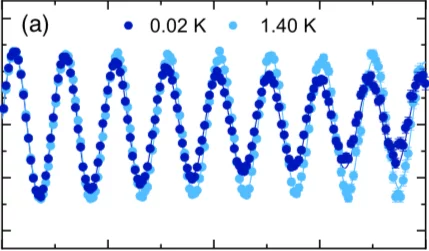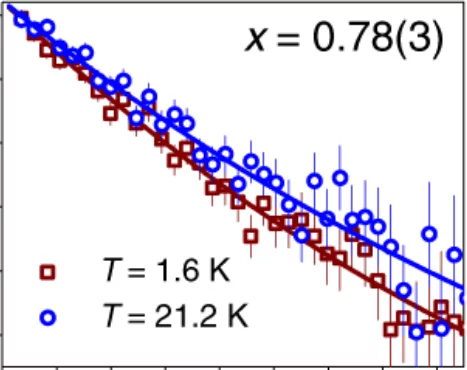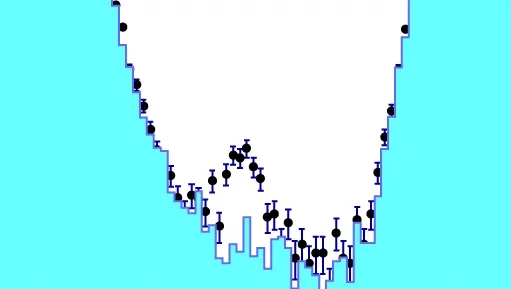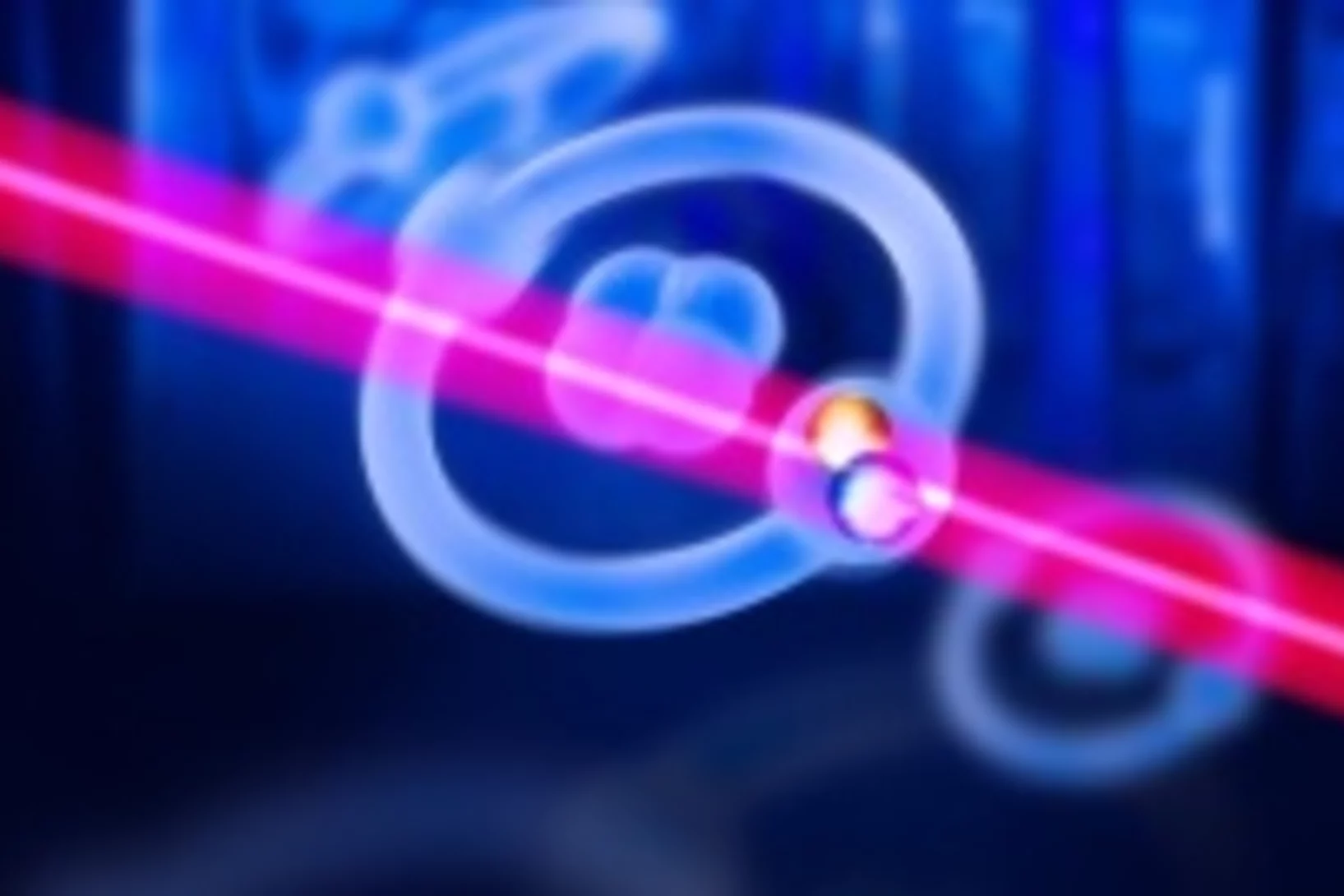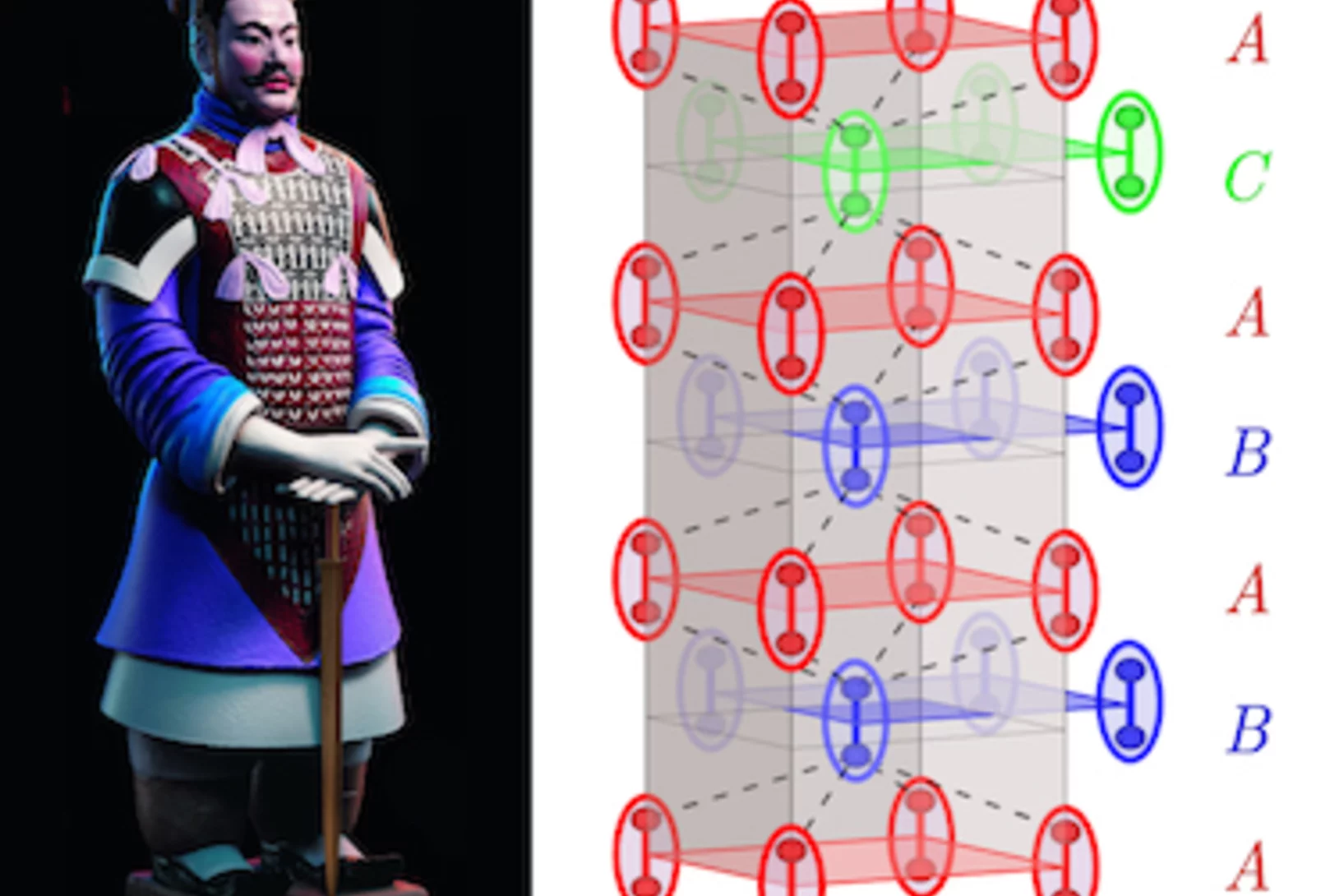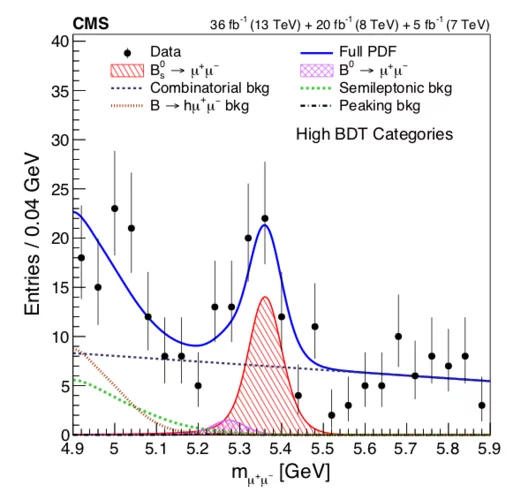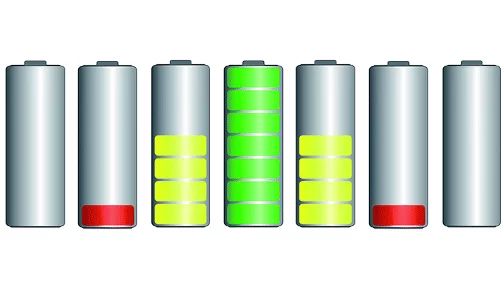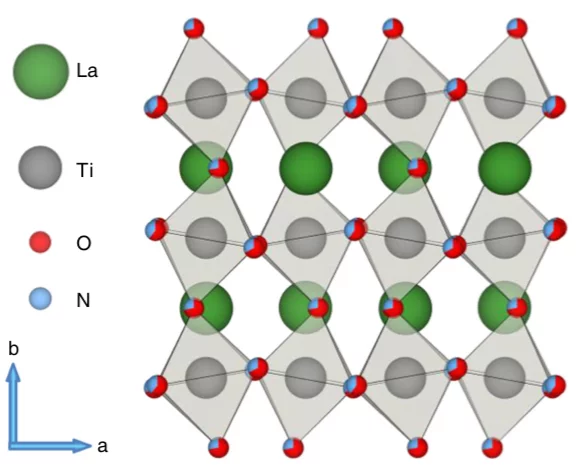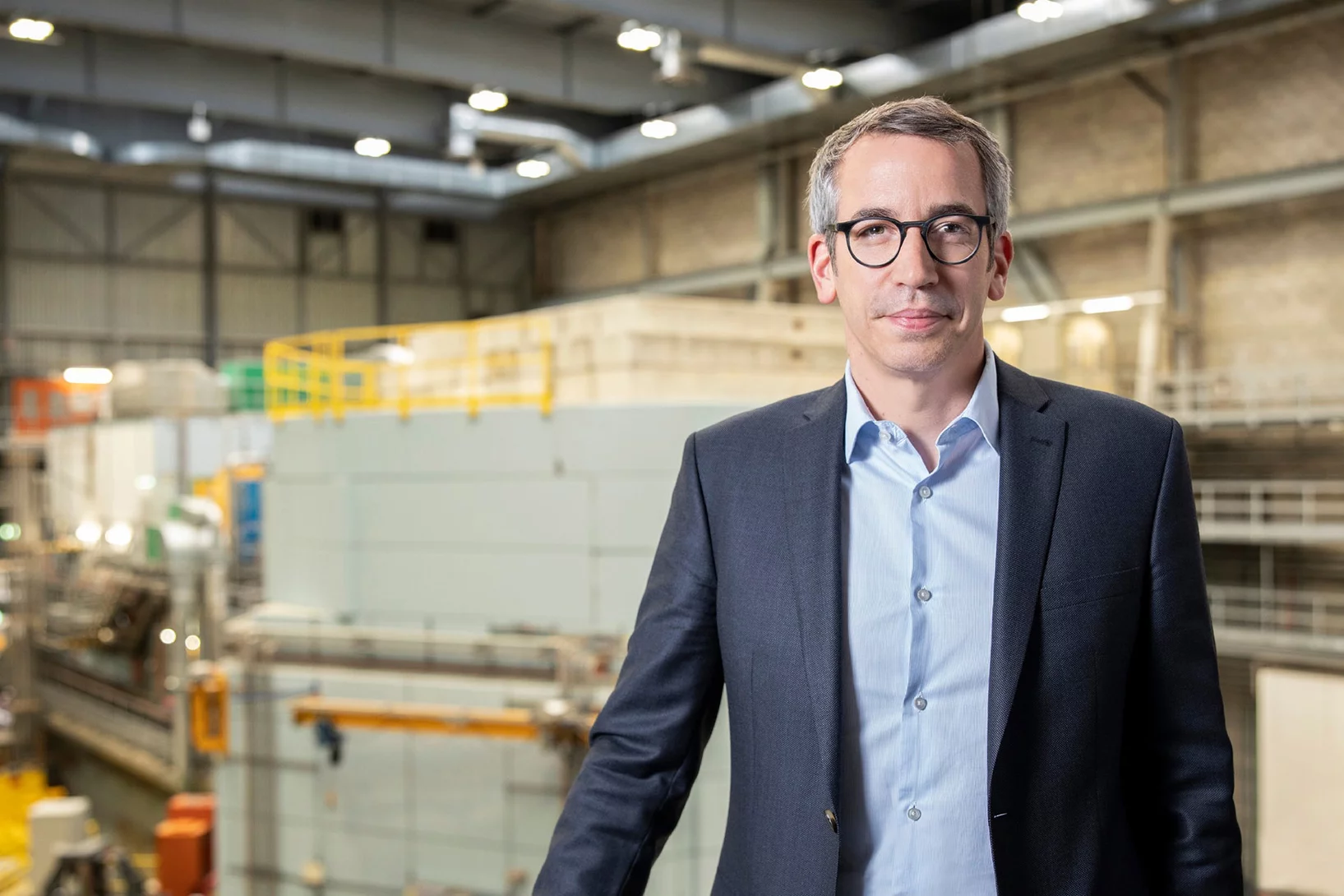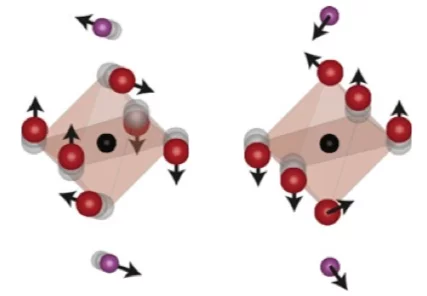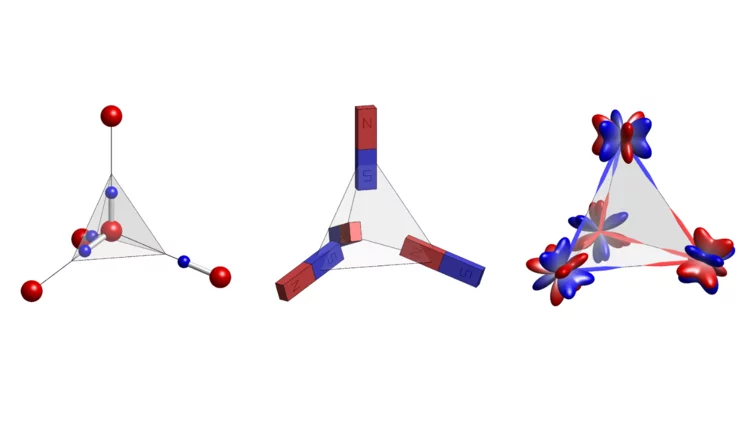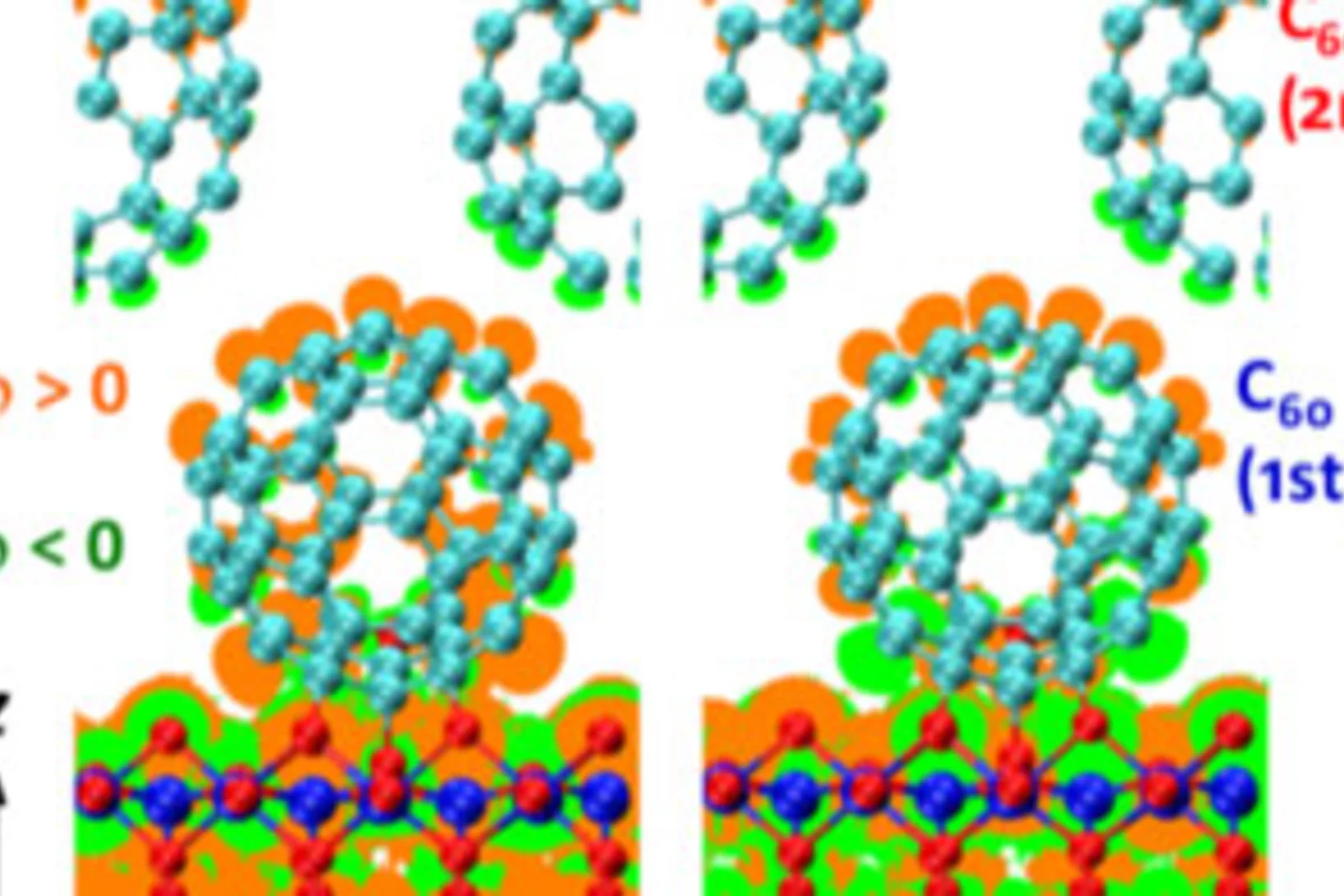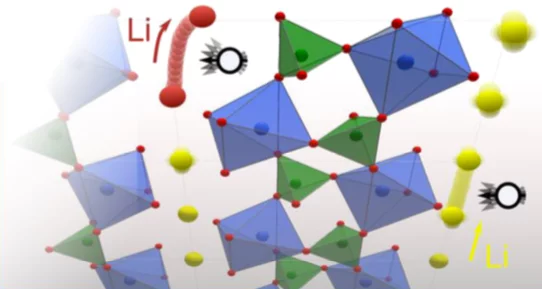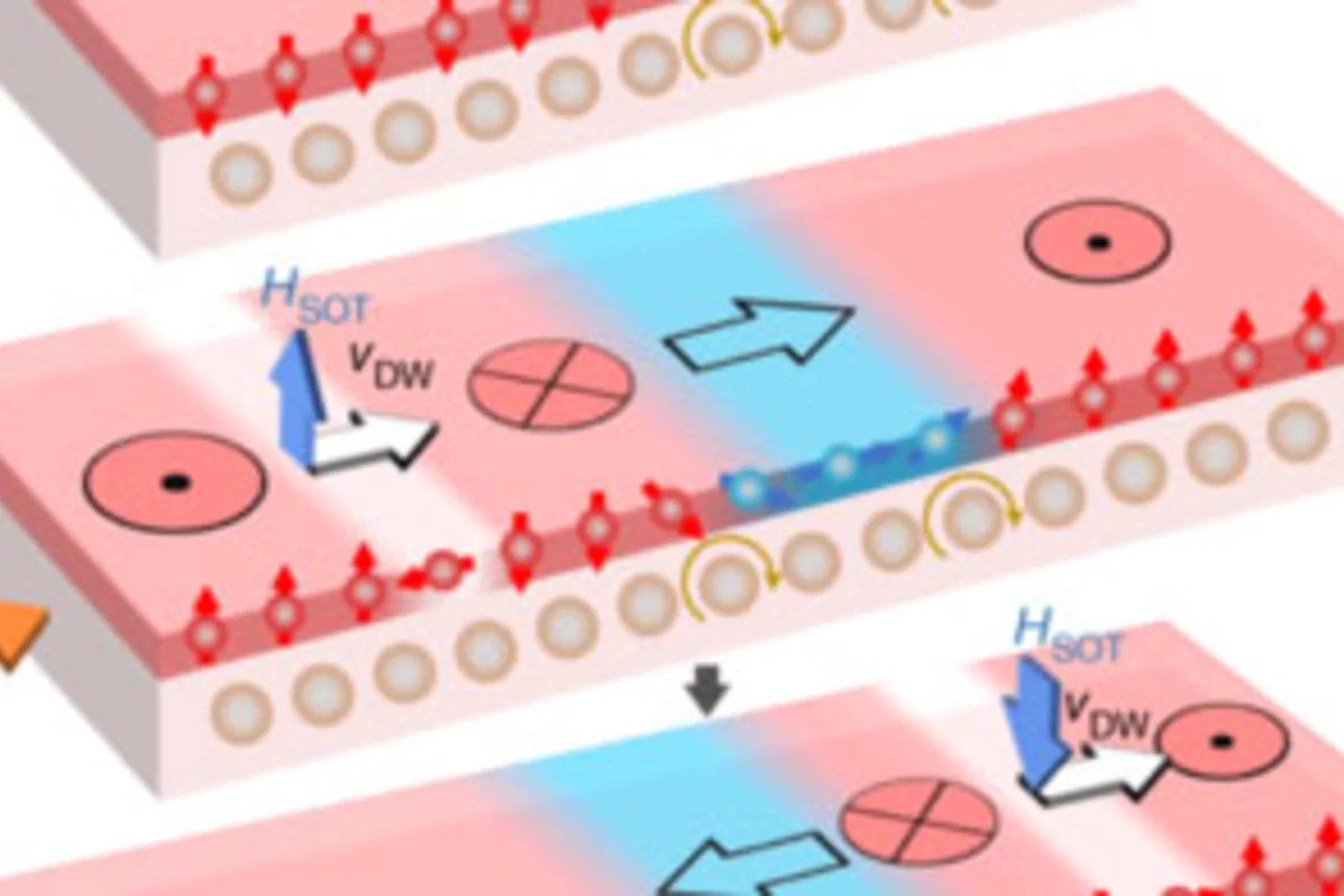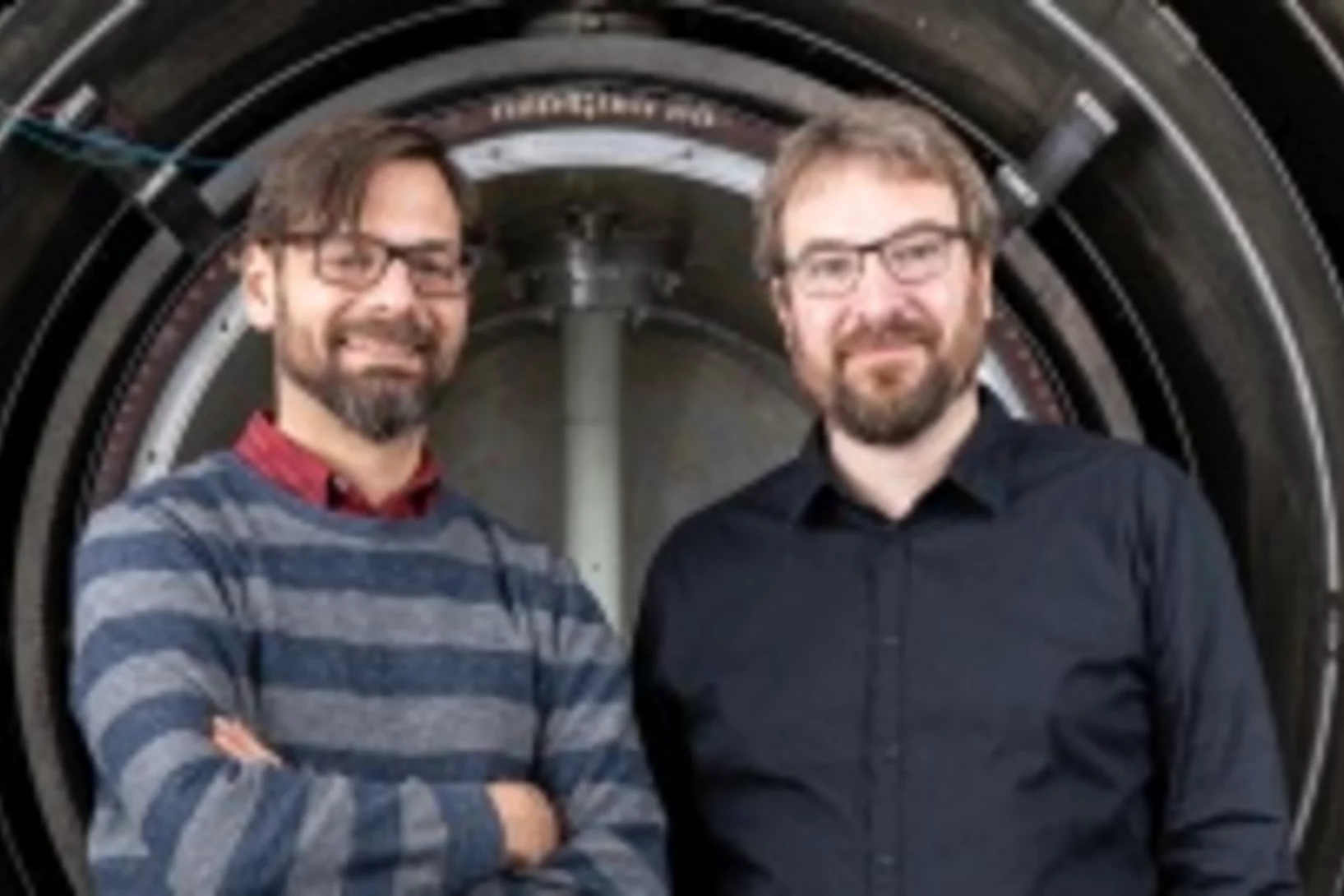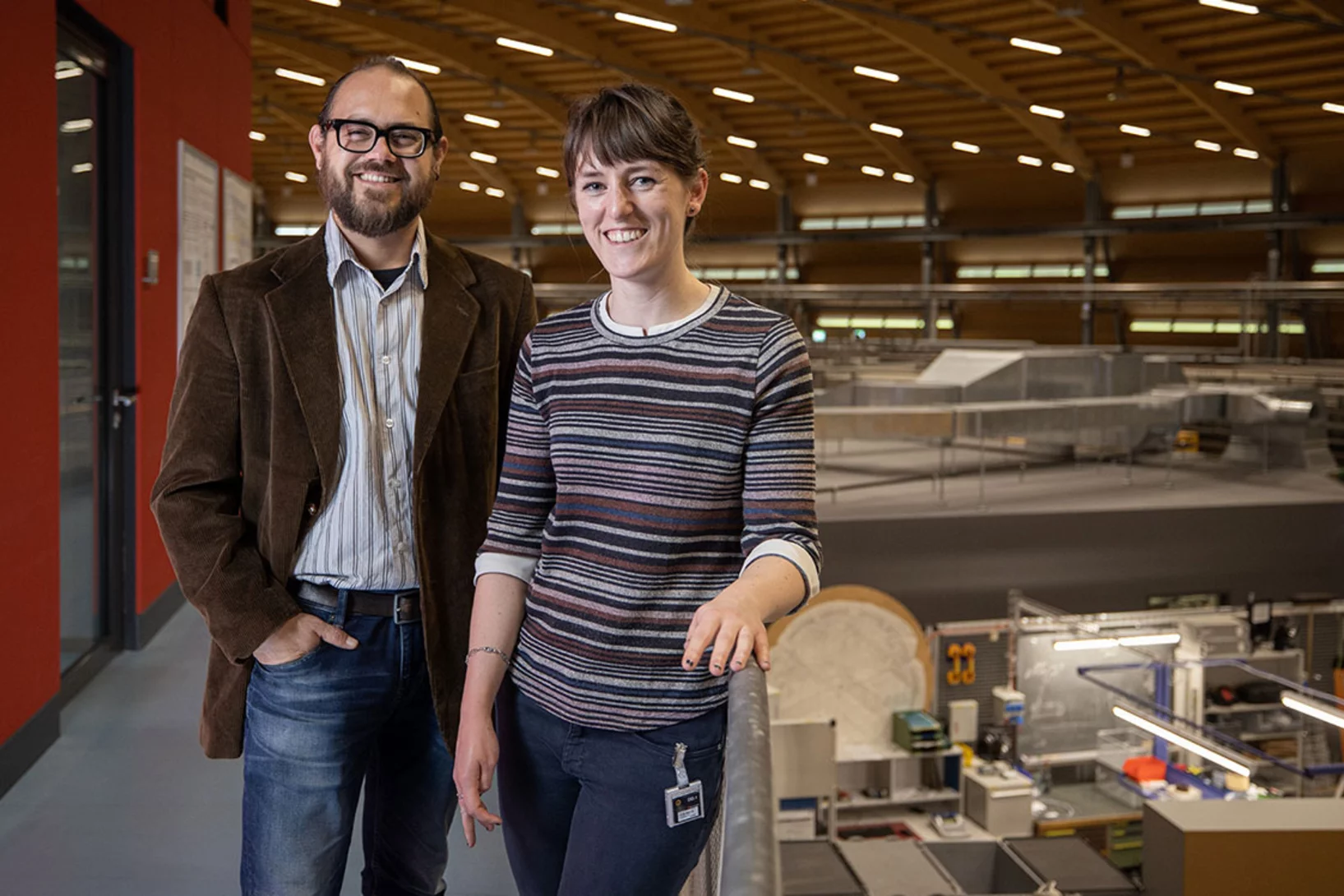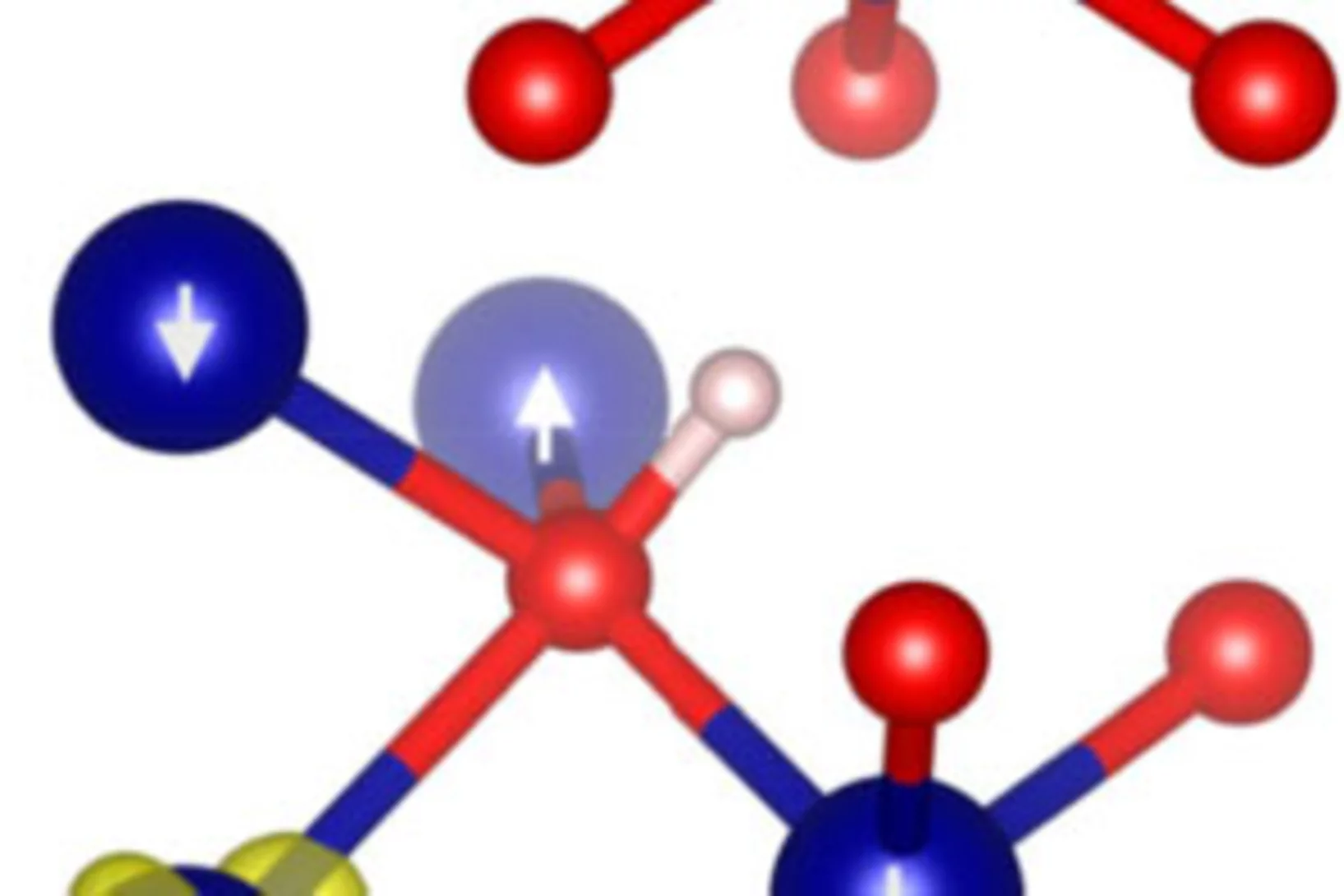Here you find current and previous news from the PSI Center for Neutron and Muon Sciences.
Anna Sótér appointed Tenure Track Assistant Professor at ETH Zurich
Anna Sótér, currently Lecturer and SNSF Ambizione Fellow at ETH Zurich, formerly member of the PSI Laboratory for Particle Physics and member of the PSI Fellow program, has been appointed Tenure Track Assistant Professor of Low Energy Particle Physics. Anna Sótér’s research is in the area of exotic atoms, where particle physics, atomic physics and quantum optics meet.
Proximity-Induced Odd-Frequency Superconductivity in a Topological Insulator
At an interface between a topological insulator (TI) and a conventional superconductor (SC), superconductivity has been predicted to change dramatically and exhibit novel correlations. In particular, the induced superconductivity by an s-wave SC in a TI can develop an order parameter with a p-wave component. Here we present experimental evidence for an unexpected proximity-induced novel super- conducting state in a thin layer of the prototypical TI, Bi2Se3 proximity coupled to Nb.
Momentum-Dependent Magnon Lifetime in the Metallic Noncollinear Triangular Antiferromagnet CrB2
Noncollinear magnetic order arises for various reasons in several magnetic systems and exhibits interesting spin dynamics. Despite its ubiquitous presence, little is known of how magnons, otherwise stable quasiparticles, decay in these systems, particularly in metallic magnets. Using inelastic neutron scattering, we examine the magnetic excitation spectra in a metallic noncollinear antiferromagnet CrB2, in which Cr atoms form a triangular lattice and display incommensurate magnetic order. Our data show intrinsic magnon damping ...
Macroscopic manifestation of domain-wall magnetism and magnetoelectric effect in a Néel-type skyrmion host
We report a magnetic state in GaV4Se8 which emerges exclusively in samples with mesoscale polar domains and not in polar mono- domain crystals. It is manifested by a sharp anomaly in the magnetic susceptibility and the magnetic torque, distinct from other anomalies observed also in polar mono-domain samples upon transitions between the cycloidal, the Néel-type skyrmion lattice and the ferromagnetic states.
LENS Webinar on New Directions in Instrumentation
On June 25 the League of Advanced European Neutron Source LENS organized a second webinar on "New Directions in Instrumentation". Artur Glavic (LIN) gave a presentation on "Neutrons for Magnetic Nanostructures on Surfaces: Beyond the Specular Intensity Wars", which is still available online.
Thermal Control of Spin Excitations in the Coupled Ising-Chain Material RbCoCl3
We have used neutron spectroscopy to investigate the spin dynamics of the quantum (S=1/2) antiferromagnetic Ising chains in RbCoCl3. The structure and magnetic interactions in this material conspire to produce two magnetic phase transitions at low temperatures, presenting an ideal opportunity for thermal control of the chain environment. The high-resolution spectra we measure ...
Phase boundary dynamics of bubble flow in a thick liquid metal layer under an applied magnetic field
We investigate argon bubble flow in liquid gallium within a container large enough to avoid wall effects. Flow with and without applied horizontal magnetic field is studied. We demonstrate the successful capture and quantification of the effects of applied magnetic field using dynamic neutron radiography and the previously developed and validated robust image processing pipeline, supported by the in silico reproduction of our experiment.
Z3-vestigial nematic order due to superconducting fluctuations in the doped topological insulators NbxBi2Se3 and CuxBi2Se3
A state of matter with a multi-component order parameter can give rise to vestigial order. In the vestigial phase, the primary order is only partially melted, leaving a remaining symmetry breaking behind, an effect driven by strong classical or quantum fluctuations. Vestigial states due to primary spin and charge-density-wave order have been discussed in iron-based and cuprate materials. Here we present the observation of a partially melted superconductivity in which pairing fluctuations condense at a separate phase transition and form a nematic state with broken Z3, i.e., three-state Potts-model symmetry.
Zooming in on water splitting
Perovskite oxynitride materials can act as effective photocatalysts for water splitting driven by visible light. A combined neutron and x-ray study now provides unique insight into the underlying processes at the solid–liquid interface and highlights how solar-to-hydrogen conversion can be improved.
Young Scientist Award 2020
The Young Scientist Award 2020 of the European Magnetism Association (EMA) goes to Claire Donnelly for advances in the experimental characterization of spin textures and their dynamics in three dimensions with X-ray techniques.
Claire Donnelly, a former Ph.D. and postdoc at PSI in the Mesoscopic Systems Group, is currently a Leverhulme Early Career Research Fellow in the Cavendish Laboratory, University of Cambridge. She received her PhD in 2017 from the ETH Zurich for her work on hard X-ray tomography of three-dimensional magnetic structures based at the Paul Scherrer Institute. Following a postdoc at the ETH Zurich, she moved to the University of Cambridge and the Cavendish in January 2019, where she is focusing on the dynamics of three-dimensional magnetic nanostructures.
Her research focuses on three dimensional magnetic systems, which she studies using sophisticated synchorotron X-rays to determine the three-dimensional magnetic configurations, and their dynamic behaviour, at the nanoscale.
Simultaneous Nodal Superconductivity and Time-Reversal Symmetry Breaking in the Noncentrosymmetric Superconductor CaPtAs
By employing a series of experimental techniques, we provide clear evidence that CaPtAs represents a rare example of a noncentrosymmetric superconductor which simultaneously exhibits nodes in the superconducting gap and broken time-reversal symmetry (TRS) in its superconducting state (belowTc ≈ 1.5 K). Unlike in fully gapped superconductors, the magnetic penetration depth λ(T) does not saturate at low temperatures, but instead it shows a T2 dependence, characteristic of gap nodes.
Superconductivity with broken time-reversal symmetry inside a superconducting s-wave state
In general, magnetism and superconductivity are antagonistic to each other. However, there are several families of superconductors in which superconductivity coexists with magnetism, and a few examples are known where the superconductivity itself induces spontaneous magnetism. The best known of these compounds are Sr2RuO4 and some non-centrosymmetric superconductors. Here, we report the finding of ...
Laser focus on mesons
The first demonstration of laser spectroscopy of a meson, achieved at PSI's πE5 beamline, opens up new avenues for precision studies of ‘exotic atoms’.
Long-lived pionic helium: Exotic matter experimentally verified for the first time
Exotic atoms, in which electrons are replaced by other particles, allow deep insights into the quantum world. After eight years, an international group of scientists have succeeded in a challenging experiment conducted at PSI’s pion source: they created an artificial atom called “pionic helium”.
Understanding Quantum Critical Magnetism in Han Purple
The ancient purple pigment used to paint the terracotta warriors, BaCuSi2O6, is also a quantum magnetic material which consists of stacked Cu2+ bilayers hosting spin dimers. Magnetometry and NMR experiments have revealed puzzling critical phenomena at the quantum phase transition (QPT) caused by an applied magnetic field, which suggest that the universal behaviour of the system is not three- but only two-dimensional. By performing high-resolution neutron spectroscopy measurements .....
Measurement of properties of Bs0 → μ+μ− decays and search for B0 → μ+μ− with the CMS experiment
Results are reported for the B0s → μ+μ− branching fraction and effective lifetime and from a search for the decay B0 → μ+μ−. The analysis uses a data sample of proton-proton collisions accumulated by the CMS experiment in 2011, 2012, and 2016, with center-of-mass energies (integrated luminosities) of 7TeV (5fb−1), 8TeV (20fb−1),and 13TeV (36fb−1).
Batteries under the neutron stroboscope
The first application of stroboscopic neutron diffraction to studying lithium-ion batteries during operation establishes a new approach to unravelling the complex processes playing out in energy-storage materials.
Examining the surface evolution of LaTiOxNy an oxynitride solar water splitting photocatalyst
LaTiOxNy oxynitride thin films are employed to study the surface modifications at the solid- liquid interface that occur during photoelectrocatalytic water splitting. Neutron reflectometry and grazing incidence x-ray absorption spectroscopy were utilised to distinguish between the surface and bulk signals, with a surface sensitivity of 3 nm.
Professor Dr. Christian Rüegg new Director of the Paul Scherrer Institute
The new director of the Paul Scherrer Institute has taken up office today. Christian Rüegg aims to further reinforce the leading role of PSI's large research facilities, and thus promote Switzerland as a location for research.
Electron–phonon-driven three-dimensional metallicity in an insulating cuprate
Elucidating the role of different degrees of freedom in a phase transition is crucial in the comprehension of complex materi- als. A phase transformation that attracts significant interest is the insulator-to-metal transition of Mott insulators, in which the electrons are thought to play the dominant role. Here, we use ultrafast laser spectroscopy and theoretical calculations ....
Spin ice expands to higher orders
With experimental work demonstrating that the correlated ground state of the pyrochlore system Ce2Sn2O7 is a quantum liquid of magnetic octupoles, an international team led by PSI researcher Romain Sibille establishes a fundamentally new state of matter: higher-rank multipole ice.
A quantum liquid of magnetic octupoles on the pyrochlore lattice
With experimental work demonstrating that the correlated ground state of the pyrochlore system Ce2Sn2O7 is a quantum liquid of magnetic octupoles, an international team led by PSI researcher Romain Sibille establishes a fundamentally new state of matter: higher-rank multipole ice.
Reversible spin storage in metal oxide - fullerene heterojunctions
We show that hybrid MnOx/C60 heterojunctions can be used to design a storage device for spin-polarized charge: a spin capacitor. Hybridization at the carbon-metal oxide interface leads to spin-polarized charge trapping after an applied voltage or photocurrent. Strong electronic structure changes, including a 1-eV energy shift and spin polarization in the C60 lowest unoccupied molecular orbital, are then revealed by x-ray absorption spectroscopy, in agreement with density functional theory simulations.
Quantifying Diffusion through Interfaces of Lithium-Ion Battery Active Materials
Detailed understanding of charge diffusion processes in a lithium-ion battery is crucial to enable its systematic improvement. Experimental investigation of diffusion at the interface between active particles and the electrolyte is challenging but warrants investigation as it can introduce resistances that, for example, limit the charge and discharge rates. Here, we show an approach to study diffusion at interfaces using muon spin spectroscopy.
Current-driven magnetic domain-wall logic
Spin-based logic architectures provide nonvolatile data retention, near-zero leakage, and scalability, extending the technology roadmap beyond complementary metal–oxide–semiconductor logic. Architectures based on magnetic domain walls take advantage of the fast motion, high density, non-volatility and flexible design of domain walls to process and store information. Such schemes, however, rely on domain-wall manipulation and clocking using an external magnetic field, which limits their implementation in dense, large-scale chips.
Broken time-reversal symmetry in the topological superconductor UPt3
Topological properties of materials are of fundamental as well as practical importance. Of particular interest are unconven- tional superconductors that break time-reversal symmetry, for which the superconducting state is protected topologically and vortices can host Majorana fermions with potential use in quantum computing. However, in striking contrast to the unconventional A phase of superfluid 3He where chiral symmetry was directly observed, .....
Symposium in memory of Jean-Pierre Blaser
Jean-Pierre Blaser (1923-2019) was one of the founders of the Swiss Institute for Nuclear Research SIN - one of the two institutions, which merged to the Paul Scherrer Institut in 1988. From 1988-1990 he was the first Director of the Paul Scherrer Institut. On the occasion of his first obit ETH Zurich and PSI organised a symposium to honour the lifetime achievement of this outstanding Swiss physicist.
Tracking down the mystery of matter
At the ultracold neutron source at PSI, researchers have measured a property of the neutron more precisely than ever before: its electric dipole moment. That's because the search is still on for an explanation of why, after the Big Bang, there was more matter than antimatter.
Short film of a magnetic nano-vortex
Using a newly developed imaging method, researchers were able to visualise the magnetic structure inside a material with nanoscale resolution. They succeeded in creating a short "film" consisting of seven movie frames that shows, for the first time in 3D, how tiny vortices of the magnetisation deep within a material change over time.
Observation of a Charge-Neutral Muon-Polaron Complex in Antiferromagnetic Cr2O3
We report a comprehensive muon spin rotation (μSR) study of the prototypical magnetoelectric antiferromagnet Cr2O3. We find the positively charged muon (μ+) occupies several distinct interstitial sites and displays a rich dynamic behavior involving local hopping, thermally activated site transitions, and the formation of a charge-neutral complex composed of a muon and an electron polaron.




